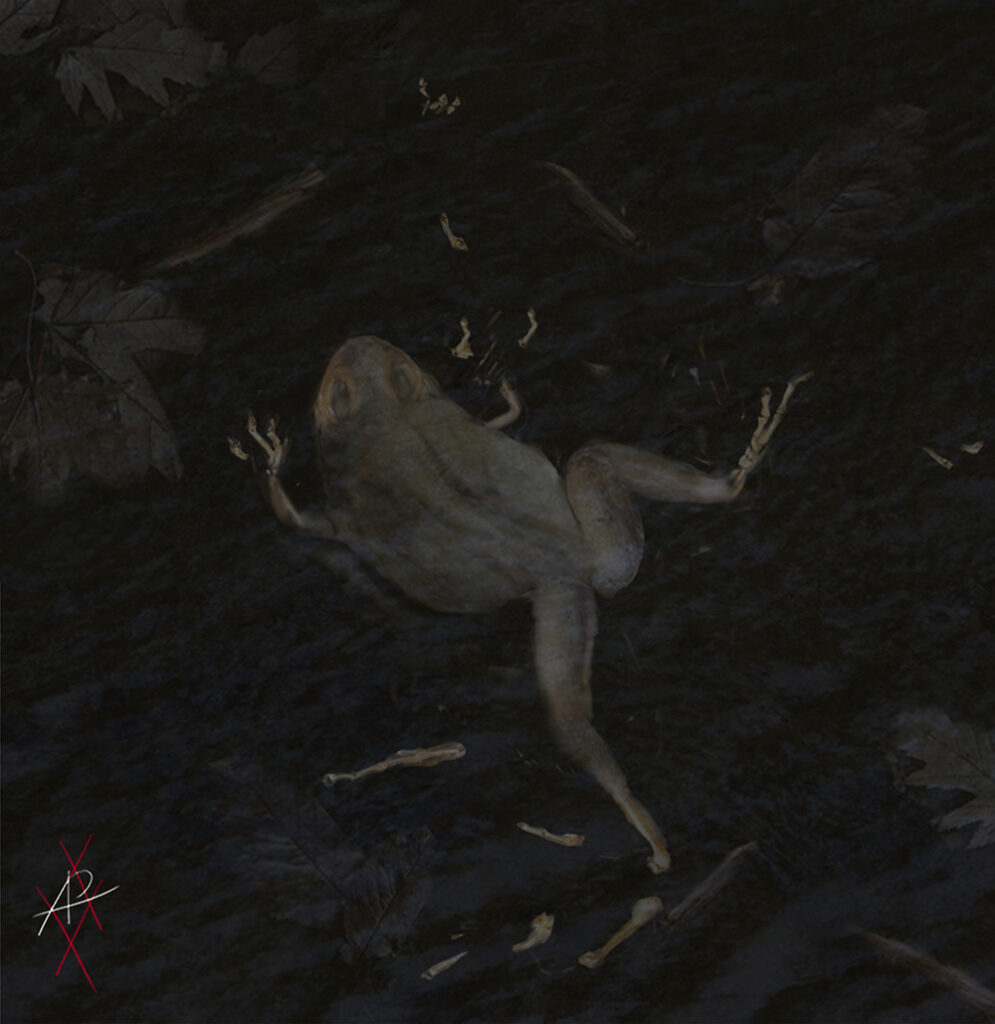Fossil frogs share their skin care secrets
Naturkundemuseum Bamberg
Palaeontologists of the University College Cork (UCC) and the SNSB have solved a hundred-year-old mystery of how some fossil frogs preserve their fleshy parts – it’s all down to their skin.
Palaeontologists Daniel Falk and Prof. Maria McNamara, together with scientists from Ireland, Germany and the UK, studied 45 million year old fossil frogs from the Geiseltal site in central Germany. Dr. Oliver Wings, director of the Bamberg Natural History Museum, one of the SNSB’s five regional museums, was also involved in the study.
Remarkably, the fossils show full body outlines of the soft tissues. The team discovered that the excellent condition of the fossil frogs is due to preservation of ancient skin remnants.
The team studied the fossils with high-precision techniques including scanning electron microscopy, synchrotron-X-ray analyses and infrared spectroscopy. These techniques were not available when the fossils were first discovered in the early twentieth century. “The fossilization of the frogs by silicic acid, which was originally assumed in the 1930s, could not be confirmed by our tests,” says Dr. Oliver Wings.
“The quality of preservation of the fossil frog skin is amazing – even subcellular structures, such as collagen fibres, are preserved.” says study lead, PhD researcher Daniel Falk. “The skin of the frogs is replicated in the mineral calcium phosphate, which helped it survive for millions of years.”
“The preservation of the skin is so good that we can even work out the habitat of the fossil frogs,” says Daniel. “The preserved skin shows adaptations to prevent drying out, which suggests that these fossil frogs actually spent most of their time on land.”
“Fossil soft tissues often reveal hidden information about the biology of animals,” said senior author Prof. Maria McNamara. “We discovered that the fossil frog skin is preserved in the same way as fossil frogs from other sites in Europe. This discovery is very exciting because it overturns scientific opinion that has lasted for almost one hundred years. What’s more, the repeated pattern of fossil preservation tells us that frogs evolved special adaptations to life on dry land over 45 million years ago.”
The research highlights the usefulness of historic fossil collections and the need to re-evaluate historic specimens using modern techniques.
The study is part of a research cooperation between UCC, the Martin-Luther-University Halle-Wittenberg (Germany), the Natural History Museum Bamberg (Germany) and the University of Oxford (UK) with funding from the Irish Research Council, the European Research Council and the International Association of Sedimentologists. The study is published today in the journal Scientific Reports.


Publication
Falk, D., Wings, O., Unitt, R. et al. Fossilized anuran soft tissues reveal a new taphonomic model for the Eocene Geiseltal Konservat-Lagerstätte, Germany. Sci Rep 14, 7876 (2024).
DOI URL: https://doi.org/10.1038/s41598-024-55822-y
Contact
Dr. Oliver Wings
Naturkundemuseum Bamberg
Tel: 0951 863-1249
E-Mail: wings@snsb.de

